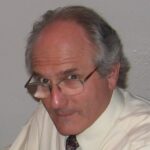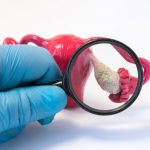Nature Cure Clinical Pearls
Jared L. Zeff, ND, VNMI, LAc
The following is a not an article prepared for a medical journal. Not every statement of fact is cited or referenced. This is a commentary on the medicine, a running set of observations about practice in the field. It’s not meant to be a peer-reviewed presentation; rather, these are notes and thoughts from a practicing naturopathic physician, a primary care doc in general practice.
Patient Update
In June 2019 (NDNR publication August 2019), I wrote about a 54-year-old man with a golf-ball-sized lump in the axilla, which turned out to be a melanoma. He had first consulted me in July 2018. I described the treatment I was giving over the course of several months while we were waiting for the insurance company to approve the recommended biologic therapy – a medication that never came through. During that year, the tumor had gotten slightly bigger, then slightly smaller. It seemed more or less stable, by palpation and symptoms; however, without imaging studies or tumor markers, I could not really know whether my treatment was doing anything. With some research, I found a tumor marker for melanoma. The original result of the serum S-100B protein in May 2019 was 188 ng/L (normal range: 0-96). The second tumor marker study, done 3 months later, was 226 ng/L (a substantial increase), and the tumor now seemed to be growing slightly.
A month ago (September), he decided to “rest,” and took a week off from our treatment. During that week, while all treatment was stopped, he saw his symptoms begin to increase, and then the tumor started to grow. I saw him yesterday, and the tumor measured nearly twice what it was a month ago. He is back on treatment, and the tumor seems to have stabilized again.
It is always difficult to generalize from an “n” of 1, but in our field this is often all we have. It seems clear enough that what we were doing was at least slowing the tumor growth: in a year it had hardly grown, and for a time had shrunk, along with a reduction in symptoms (pain, fatigue, range of motion of the arm). In that August publication, I discussed my history with cancer treatment. One of the things I have seen is that, when only traditional naturopathic techniques are applied, we tend to see a significant slowing of the cancer process, and sometimes a reversal. I have observed this a number of times. This case seems to be one such example. I will report again when I have some new information.
Another Update
In July 2019 (NDNR publication October 2019), I reported on another case of cancer – a little girl with DIPG, a pontine glioma of children that is considered 100% fatal, with no known effective treatment. I reported on her amazing mom, a waitress, who was becoming quite educated on this condition through constant reading. Little Alice was appearing to decline, but then her mom tried a few more things, and Alice improved again. This was not by my efforts, but rather by her mother’s dogged, intense devotion to her daughter’s life and well-being.
As a last effort, her mom added 2500 mg/day of blueberry extract, 150 mg pterostilbene, 1000 mg ellagic acid, and a “sliver” of THC oil. With these additions, Alice moved from severe, mute lethargy and flaccidity to visible improvements in personality, stamina, and strength. Her mom reported, “She is awake most of the day, her eyes are tracking normally once again, and she is more vocal and quite alert.”
However, about a month ago Alice became extremely dehydrated and her mom took her to the ER, where she was given IV fluids for the dehydration. She developed severe hydrocephalus with the IV, and passed away shortly after that.
The Vital Gathering & the NMI
On the first weekend of October 2019, I attended the Naturopathic Medicine Institute (NMI)’s fourth “Vital Gathering” – a conference of practical skills that emphasize the “vitalistic” core of naturopathic theory and practice.
For a number of years, Jim Sensenig, Thom Kruzel, Letitia Dick, Joe Holcomb, I, and a few others have been concerned that preceptors didn’t seem to know what we thought they should know. Our schools were training excellent doctors. They graduate as competent diagnosticians, ready to begin in primary care practice. But many of these young docs, for example, were afraid to treat a simple case of pneumonia without referral to the ER, or seemed reluctant to use homeopathy. Our concerns went nowhere, until Eli Camp, ND, partnered with Jim Sensenig, ND, to create the Vital Conversation 3 years ago, and something clicked. Every Wednesday at noon Eastern Time, Dr Jim Sensenig would get on the phone and have a discussion with a colleague about the medicine and the philosophy behind it. Participants could call and listen in on the conversation. Word spread quickly. Within 7 months there were 800 doctors listening in on the call. Many of these practitioners began demanding more training from us, and then someone discovered a curriculum that we had developed a few years before, in which we detailed what we thought a naturopathic physician should know.
Requests to teach this curriculum led to the first “Vital Gathering” in Phoenix, about 3 years ago, at which we began teaching what we considered to be the basics, starting with a detailed dive into foundational naturopathic philosophy. We offered practical course work in homeopathy, botanical medicine, dietetics, manipulation, physiotherapy, and so on. We have a number of courses archived online, and we have developed comprehensive coursework in what we are calling Vitalist Naturopathic Medicine, based on the practices we learned from our teachers – naturopathic giants like Drs Bastyr, Dick, Turska, Broadwell, and others.
We have just completed the 4th Vital Gathering, which now occurs regularly each fall. This last one was in Dallas. The next one will be in Phoenix, date to be determined.
A Day in the Clinic
Last Thursday was a typical day for me. In primary care practice, every day is different. I book 1 hour for returning patients, 2 hours for new patients, and do treatments like manipulation, acupuncture, and hydrotherapy, on the hour. But one never knows who will walk in with what kind of problem.
My first patient on that Thursday was a woman with interstitial cystitis (IC). I have become somewhat of a celebrity in this field. I cured a woman of this miserable condition a few years ago, and she wrote about it in a blog, and her blog has gone viral. I now have patients with IC from around the world. For the most part, this idiopathic inflammation of the bladder and other pelvic structures is a miserable and conventionally incurable malady associated with chronic pain. The typical case takes about 3-4 months to resolve, with continual improvement until there is no more pain or bladder disturbance. The key I have found is that old naturopathic culprit: toxemia.
I began with her in August 2019. By the beginning of October her bladder pain was “87%” improved. I thought that was an odd numerical assessment, but she has a sense of humor. By the end of October there was no pain. Then she experienced a flare in early November when she injured her low back. I treated her back, gave her another dose of Staphysagria 200C, and the pain resolved.
Next, I saw a woman whose chief complaints were fibromyalgia, psoriatic arthritis, and postpartum depression with anxiety. This was her second visit. She had been referred to me by a local chiropractor who was treating her for back pain that began after the birth of her third child. All of these problems began with that birth. When I had first seen her, 6 weeks prior, I gave her a diet to follow, some adrenal and thyroid support, a bitter tonic for digestion, an initial set of drainage remedies to help clear the inflammation, and a botanical tincture containing Avena, Melissa, Bacopa, and Passiflora (40 drops in water 3 times daily).
She was much improved on this most recent visit visit. The depression/anxiety had cleared, and the fibromyalgia and arthritis were much improved. I suspect that most of her improvement was because her menses had resumed. Whether my work had anything to do with this, I cannot say, but she was happy and feeling much better. She was able to stop the medicines I had prescribed, and she no longer needs me.
My third patient that day was a woman who had come to me several years prior, who was drinking daily to help with her deep-seated anxiety; she was also on clonazepam, trazodone, and venlafaxine. Her goal is to get off of these medicines entirely, though she had been on them for many years. But she was now off of alcohol, and we have been reducing her medications. In Oregon and Washington, where I can prescribe these things, I can also un-prescribe them, and we have been in a long process of taper. I am supporting her with dietary changes, a Melissa, Bacopa, Avena combination, a little thyroid support, B-Complex, Nux vomica 6C, and some botanicals to support her liver. The progress is slow but steady. I have been working with her for 2 years, and she is looking and functioning better, and taking less medication, and now, finally, no alcohol.
Next that day I saw an 11-year-old boy (“Jason”) with asthma and allergies. I reported on his case in the November 2019 issue of NDNR. When he came to me in July 2019, he was using inhaled fluticasone (twice daily) and albuterol as needed. This was his third visit. Jason is still taking 1 puff of fluticasone each morning, but is otherwise fine. He has not needed the homeopathic (Arsenicum album 30C) I had prescribed. As I tested him, I found that his peak flow was now 350 (normal), his O2 saturation was 98%, and his heart rate was 72 beats per minute. Auscultation revealed no rales at all. I recommended that they try reducing the fluticasone dose to 1 puff every other day for 2 weeks, then go off altogether, but to keep the homeopathic medicine handy if needed. I’ll see him in another month, and likely see him off of all these medications.
My next patient was a new patient – a woman with significant hearing reduction in one ear, occasional disorientation, arrhythmia, a urinary tract infection (UTI), and anxiety. She also wants to stop smoking. Upon examination I discovered that her left ear was totally occluded with wax, though her right ear was clear. I instructed her in the use of a bulb syringe to clear the left ear, and presume that will cure the deafness. The other problems were more significant: She reported that the disorientation and forgetfulness started when she began to use nicotine mints to help her stop smoking. She discovered, upon reading the label, that they contained aspartame. She quit them, and in 2 days her forgetfulness and disorientation improved; however, she now needed something to help her stop smoking. She would prefer a non-antibiotic approach to her UTI. She is currently taking 19 supplements, a variety of things like turmeric, vitamin D, red yeast rice, serrapeptase, SAM-e, and others. She would like to take less, but wants advice on which supplements to eliminate.
I took her case in detail, examined her, did a urinalysis (UA), and began a dietary evaluation. Given her symptom picture, I gave her homeopathic Equisetum 30C, and her bladder pain eased immediately. I sent her home with more Equisetum, to take as needed if the bladder pain returned, and asked her to return in 2 days for a quick UA to follow up. I prepared a homeopathic combination of Caladium 30C, Tabac 30C, and Nux vomica 30C, which I have seen substantially reduce tobacco cravings. I told her to take it whenever she felt the need for a smoke. And if that was not enough, to come in for acupuncture, to further reduce the craving. I spoke with her about the anxiety, trying to determine its origins. I gave her a combination tincture of Crataegus, Lycopus, Cactus, and Convallaria (2:2:1:1), 90 drops in the morning and evening to help the arrhythmia; I also gave her Cactus 6C, to be taken 3 times daily. I told her she’d have my dietary advice by email the next day, to meanwhile stop the red yeast rice, and to call with any questions or concerns. I arranged to see her in about 1 month to review her progress and to begin reducing the supplements as indicated by how she was coming along.
Next, a woman brought me her child for a dietary evaluation, and then a mom came in for vaccine counseling. Her son had a bad reaction to his last round of vaccines, and she wanted to talk about an exemption from future vaccines. I also did 2 acupuncture treatments that day, a manipulation, and a hydrotherapy treatment. It was now 5 PM, and the day was over. This had been a full day, and I squeezed in some lunch. I love what I do and the little miracles we see each day, but I grieve for little Alice and her mom. I did not know enough to help her. I need to learn more.
Respectfully,
Jared Zeff, ND, VNMI, LAc
 Jared L. Zeff, ND, VNMI, LAc, is a licensed doctor of naturopathic medicine and a licensed acupuncturist. In addition to functioning as Medical Director at the Salmon Creek Naturopathic Clinic in Vancouver, WA, Dr Zeff teaches on the faculty at National University of Natural Medicine in Portland, OR, where he was also Dean from 1988 to 1993, and holds a professorship in Naturopathic Medicine. Dr Zeff is a graduate of the University of California, NCNM, and the Emperor’s College of Traditional Oriental Medicine. He, along with Pamela Snider, is the author of the AANP’s Definition of Naturopathic Medicine, and the Therapeutic Order concept.
Jared L. Zeff, ND, VNMI, LAc, is a licensed doctor of naturopathic medicine and a licensed acupuncturist. In addition to functioning as Medical Director at the Salmon Creek Naturopathic Clinic in Vancouver, WA, Dr Zeff teaches on the faculty at National University of Natural Medicine in Portland, OR, where he was also Dean from 1988 to 1993, and holds a professorship in Naturopathic Medicine. Dr Zeff is a graduate of the University of California, NCNM, and the Emperor’s College of Traditional Oriental Medicine. He, along with Pamela Snider, is the author of the AANP’s Definition of Naturopathic Medicine, and the Therapeutic Order concept.





